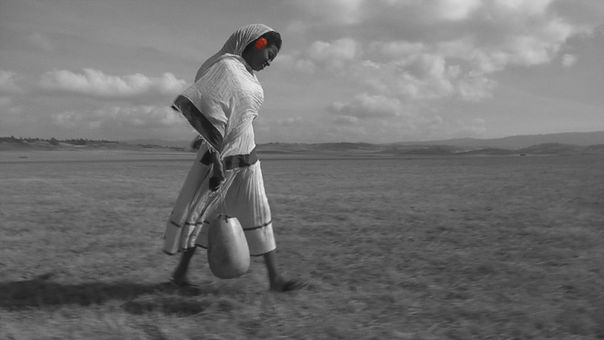Women, Men and Vampires
Monica Obaga of the Talent Press Durban 2014 reviews the multi-faceted, multi-genre Ethiopian monster-and-war feature BETI AND AMARE, written and directed by Andy Siege.

BETI AND AMARE by Andy Siege
Beti (Bethlehem) is a young woman living with her grandfather. Their shack is the only sign of life in the vast, desolate plains. Life is simple. Everyday, she walks to the nearest oasis to fetch water, her single most important task. One day the soldiers come and a knife becomes her constant companion. Grandfather goes to the market in the city and Beti is suddenly ever so alone.
At first glance, this low budget vampire romance set in 1930s Ethiopia seems contemplative, but when the end credits roll, there is a bit of the creature feature, war film and character study embedded in its framework. The film is minimalist and quite visually striking. The score is sparse, effective and most importantly Ethiopian. Beti's emotions are tracked through the inclusion and exclusion of color within each frame. During a high stakes moment in the film, the red flower in her hair loses its color as it falls to the ground, blending into the now completely black and white scene.
Her dialogue is very poetic. When giving a mini-tour of her home area to her uncomprehending alien companion, who she named Amare (meaning "handsome" in Amharic), she says, pointing, "There are the places that aren't here. There's more there. And there." Hiwot Asres's performance and characterization of Beti comes alive with conflict. One powerful moment is when she's hurt and unable to move anything but her left eye, scanning for her captor, planning her next, slow, painful move. Amare is a humanoid monster, easily identified as a vampire although we don't know for certain. Pascale Dawson's performance is basically a puppy on speed, which is adorable and hilarious, with an underlying danger and unpredictability.
Miriam Makeba once said "Sometimes it's better to laugh so we can keep from crying." There is humor in Beti and Amare's relationship reminiscent of the way Africans easily laugh through troubles. As a thematic piece on women during wartime, it is disappointingly patronizing. Besides the context of the film being at the periphery of the war, the overall effect is that Beti's beauty and wisdom is juxtaposed against caricatured monstrous men. One of the soldiers is empathetic only for a second and quickly proceeds to join the rest in being cartoonishly vile. Amare is the only tool in the development of her character shown in the transformation of their interactions over time. None of the other characters seemed to have been given much thought, and are relegated to oppressor and savior, emphasizing her vulnerability and victimhood. Beti is funny and smart, and easily gets herself out of sticky situations, so her passivity on multiple interactions seem inconsistent.
The motif in the film, all humans' capacity for evil and the fluidity with which war makes monsters of the most unlikely and vice versa, has less impact because it is exemplified in the minor characters whose appearance is sparse and caricatured. Only Amare's layers are explored, with some uncomfortable political implications. That Beti has no fear from her monster, and that she, a human, can sick him on other humans, and he would never harm her, seems like a basic flaw.
So as a thematic piece on colonialism, and women in wartime, BETI AND AMARE fails to deliver. But as a historical fantasy, BETI AND AMARE is charming, quirky and full of heart.

